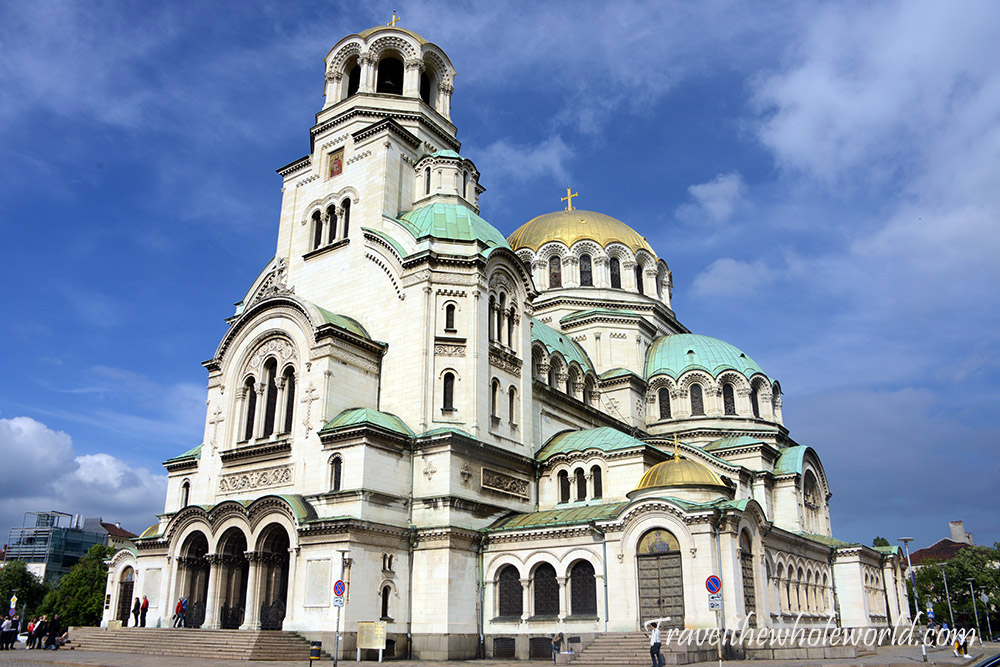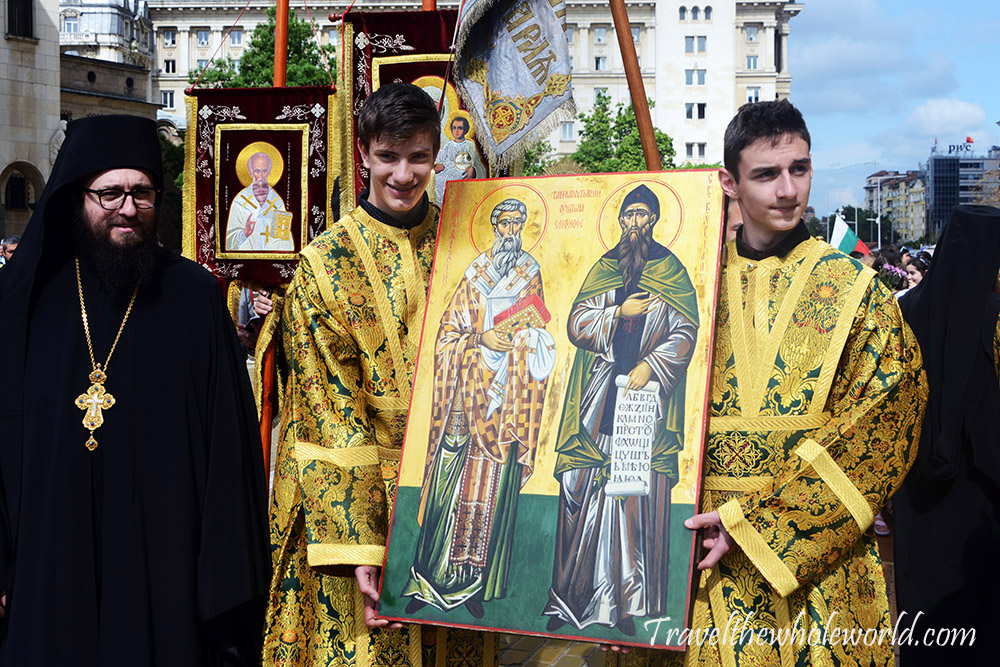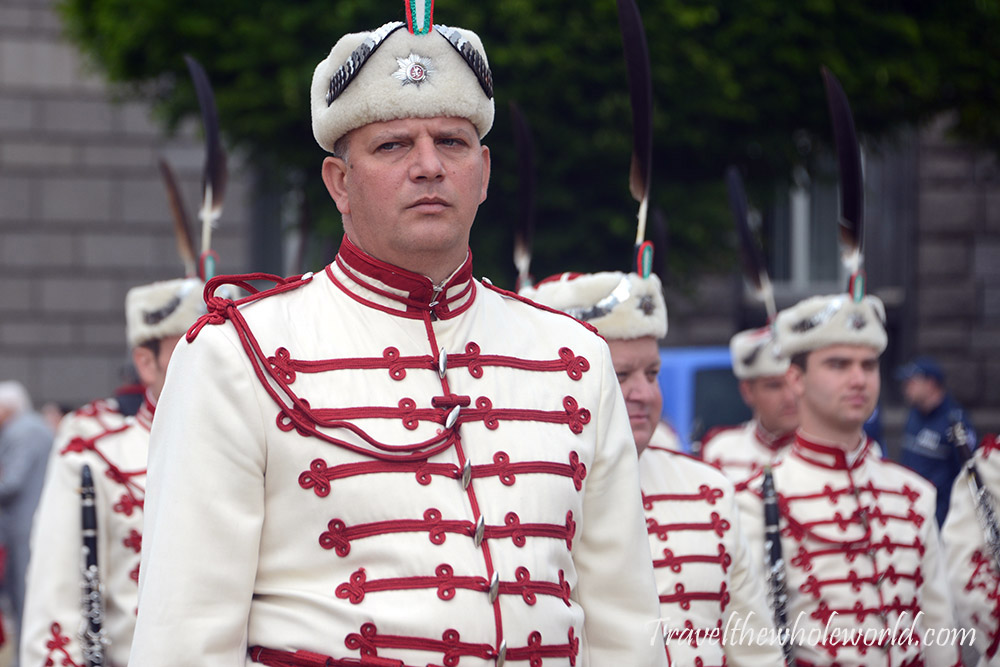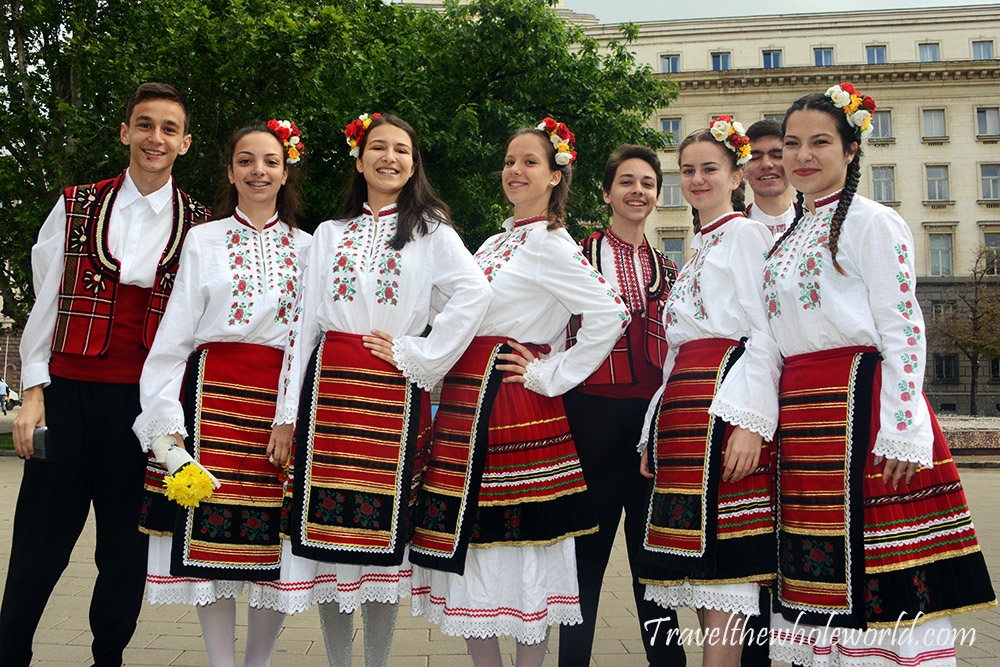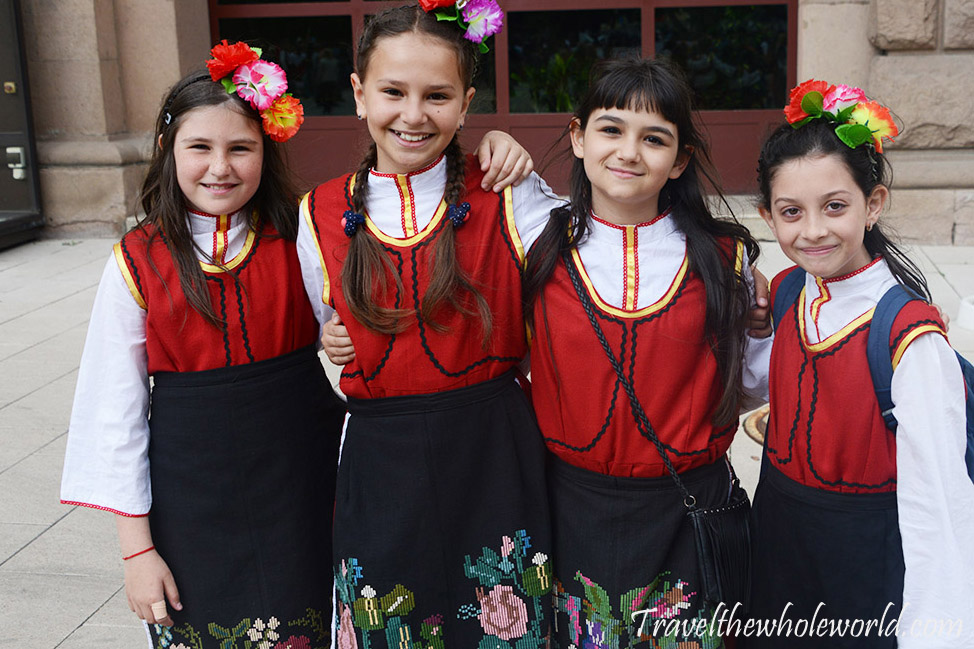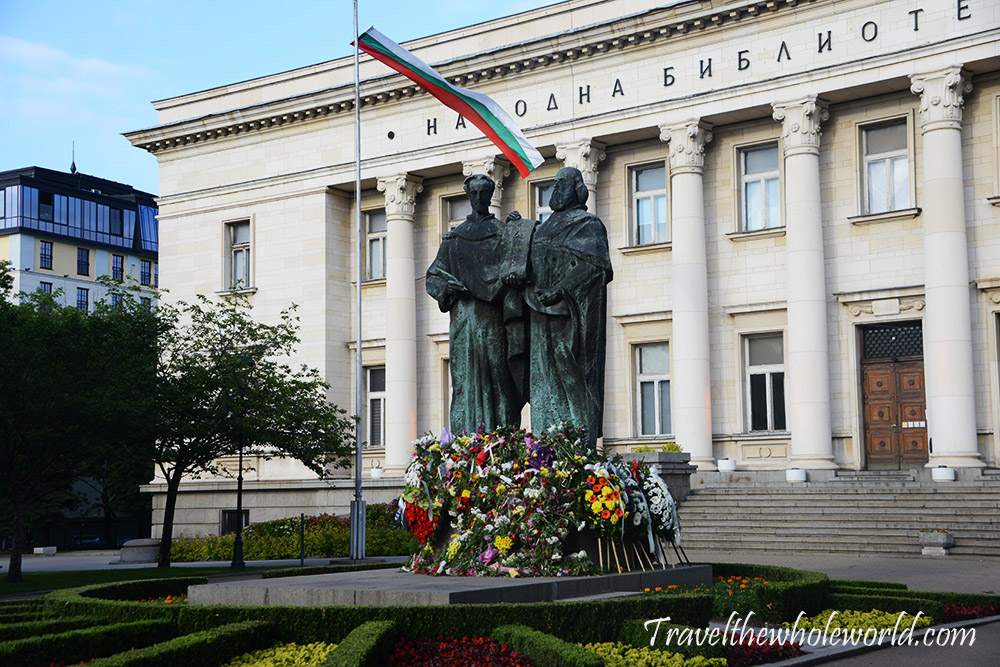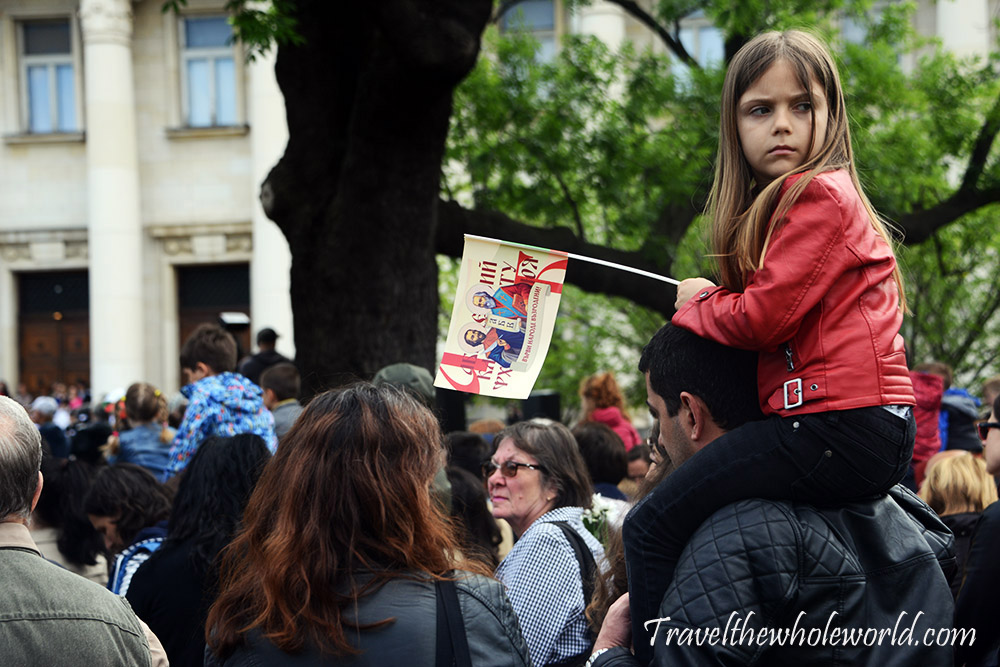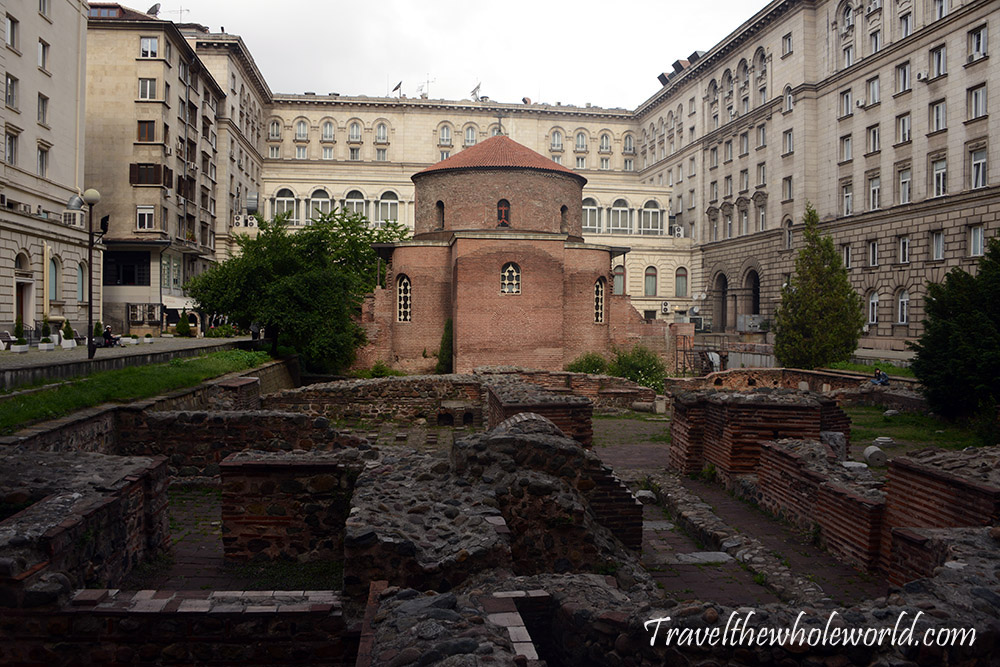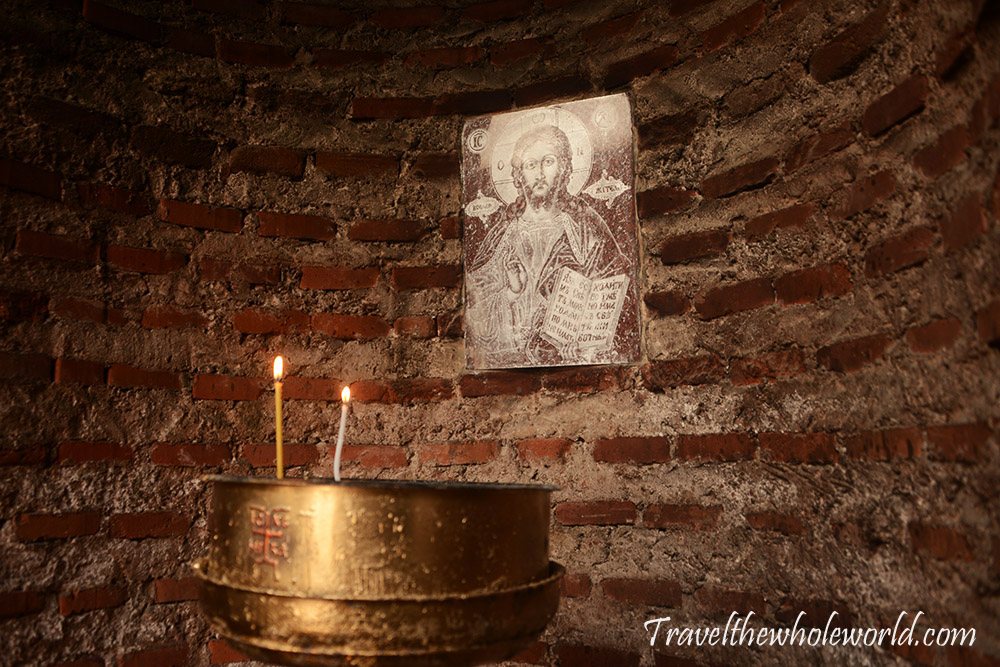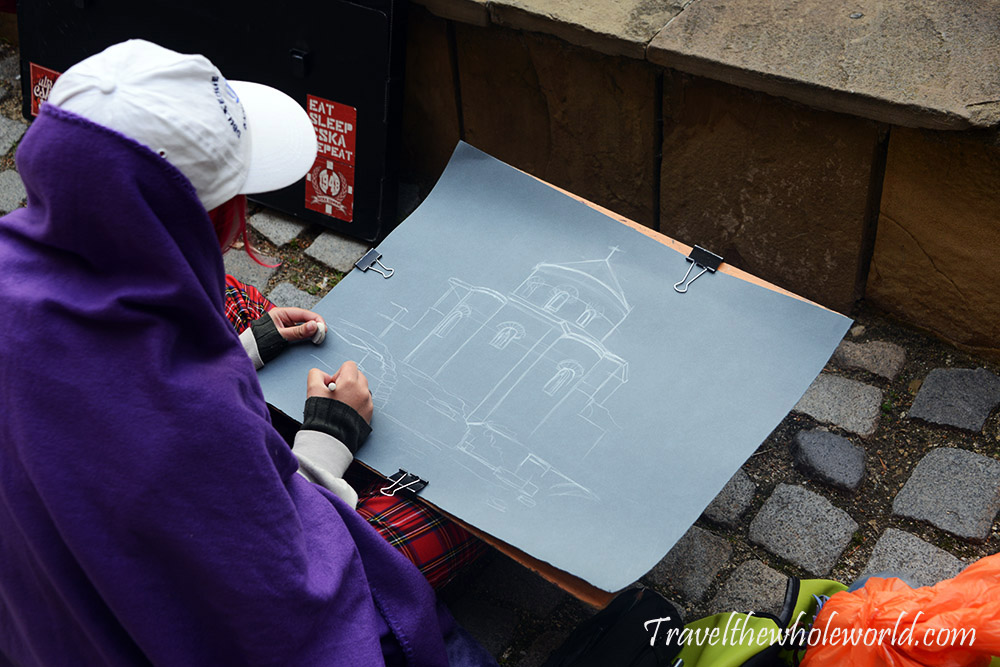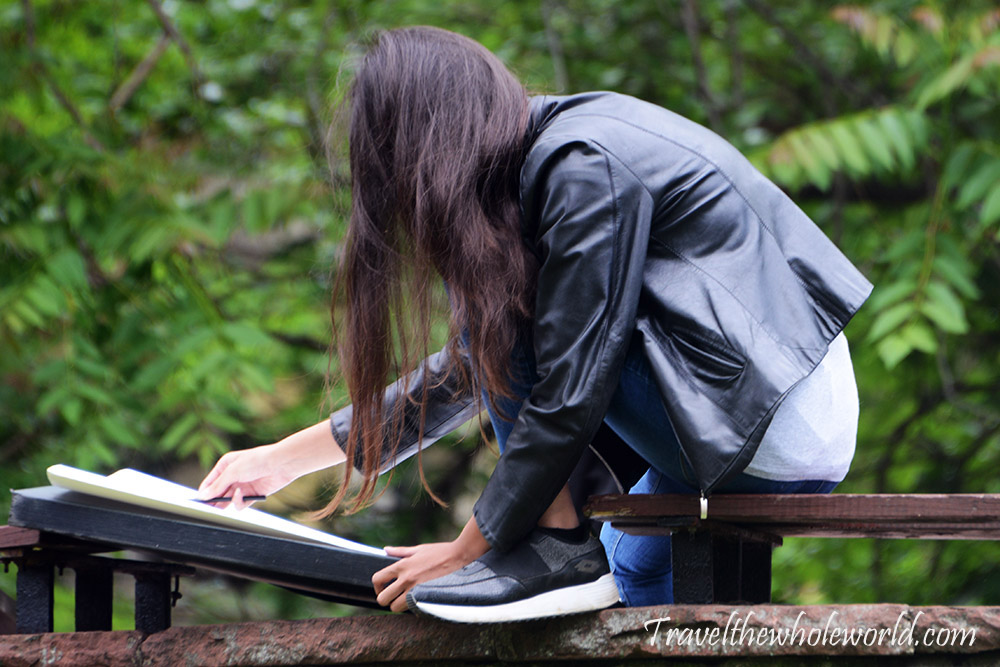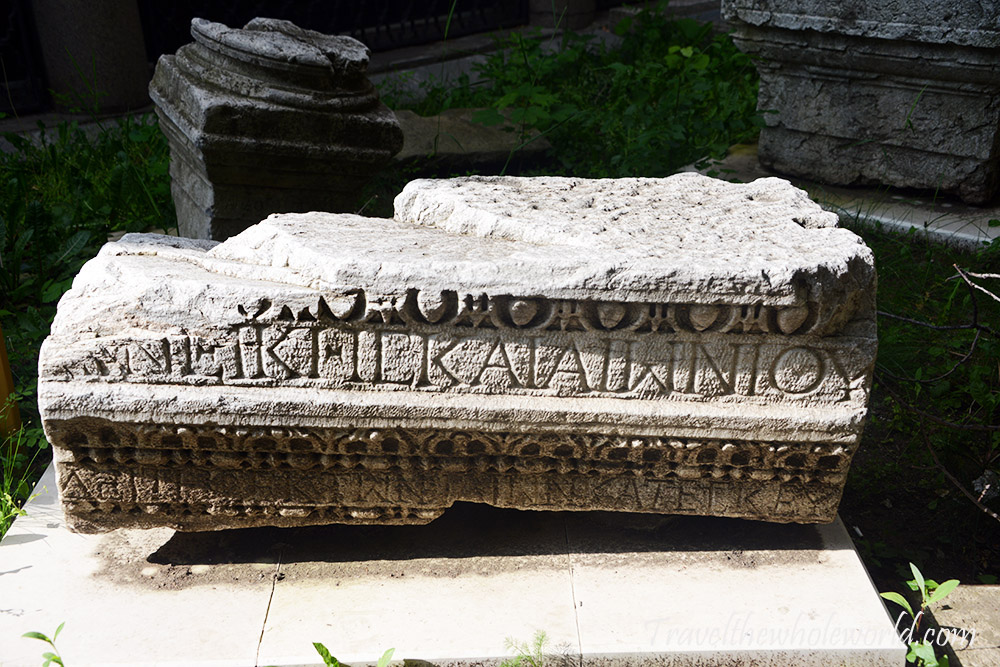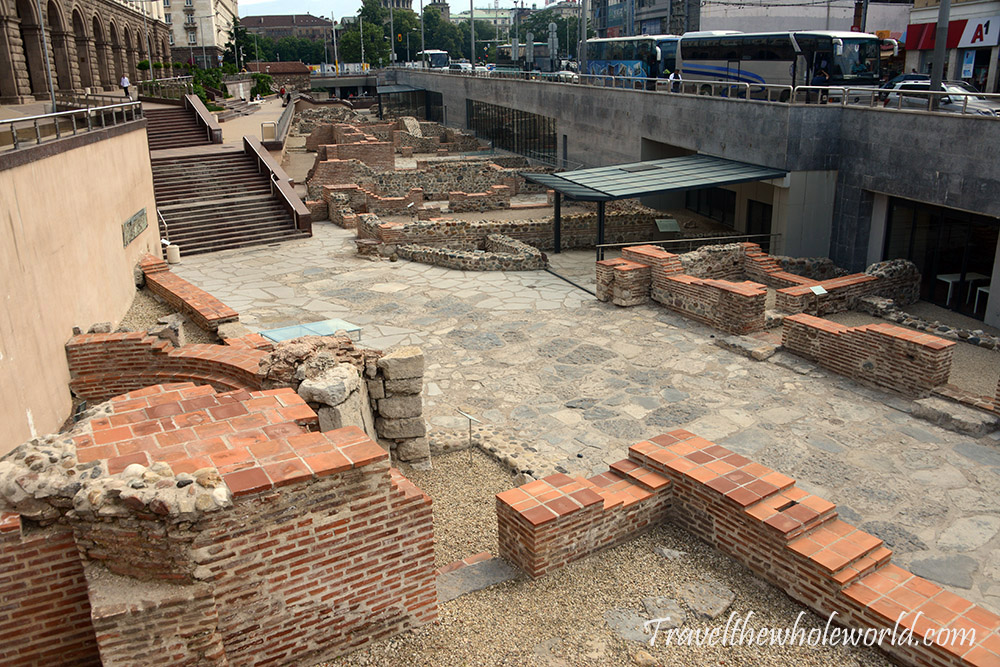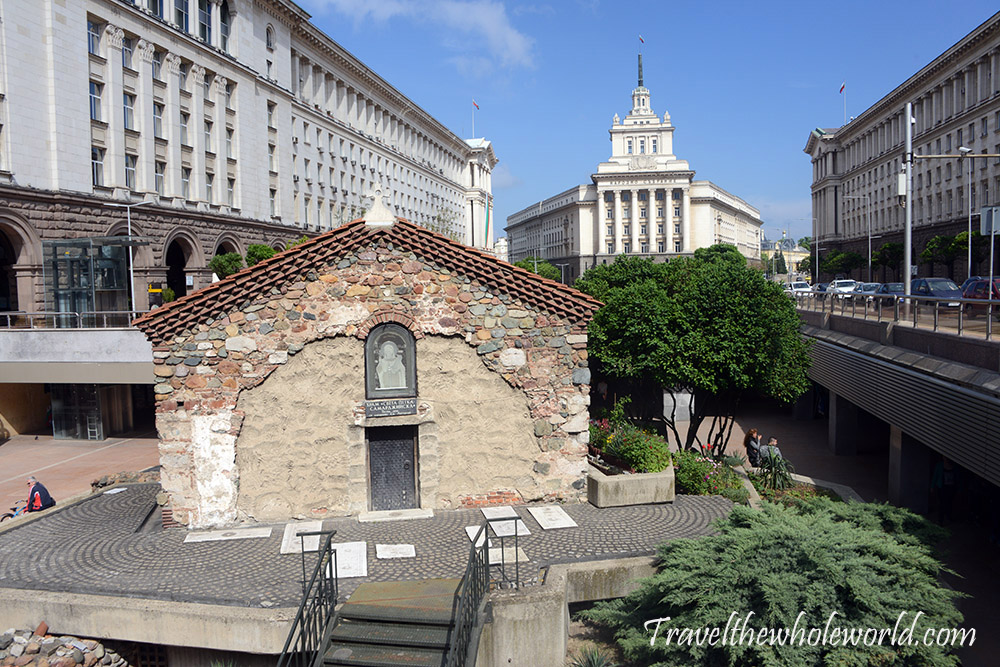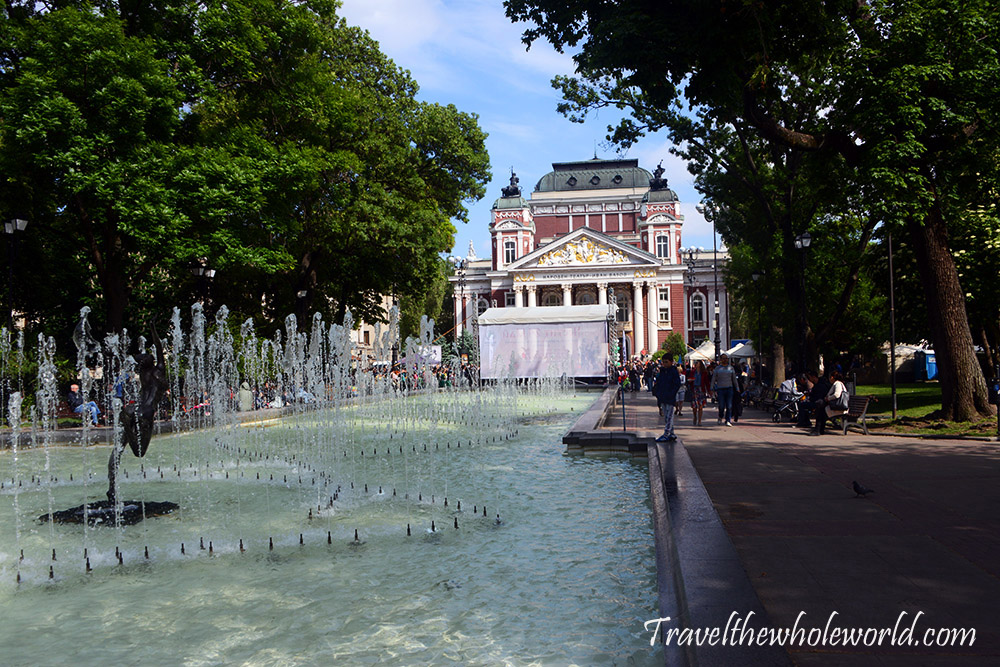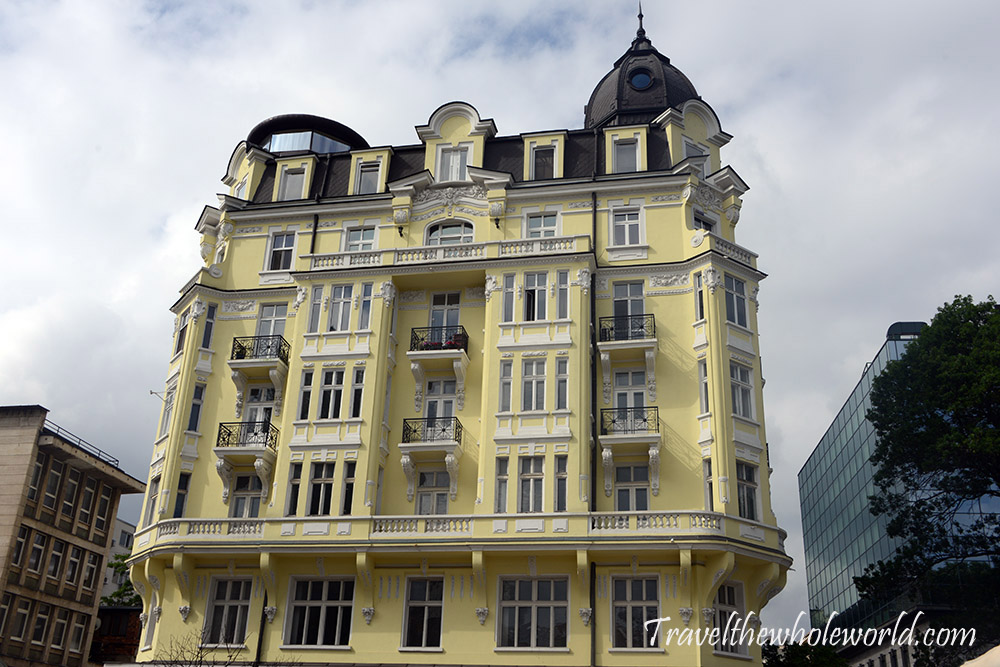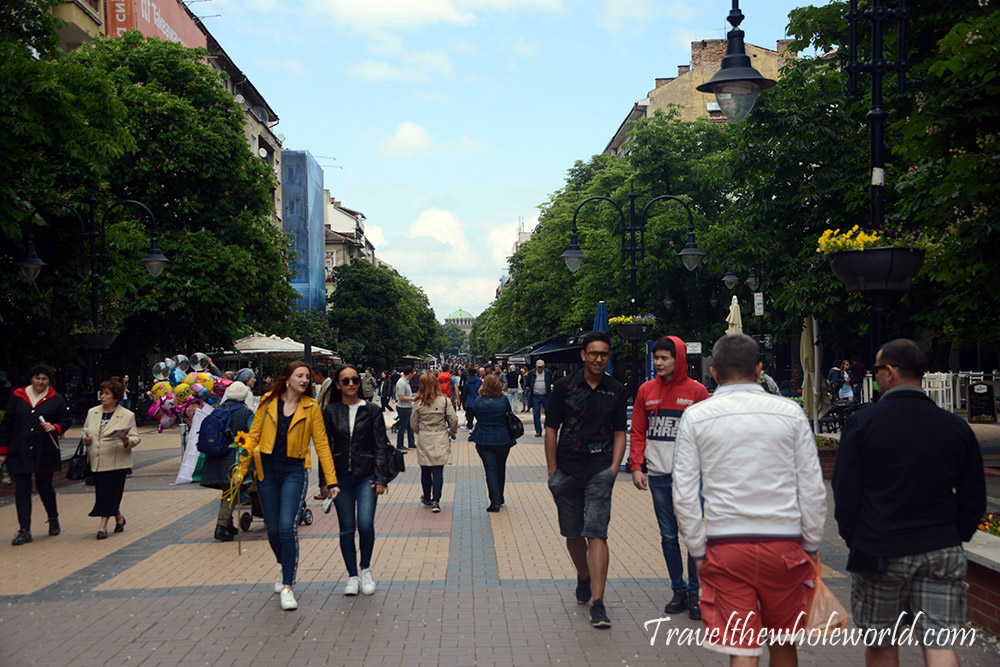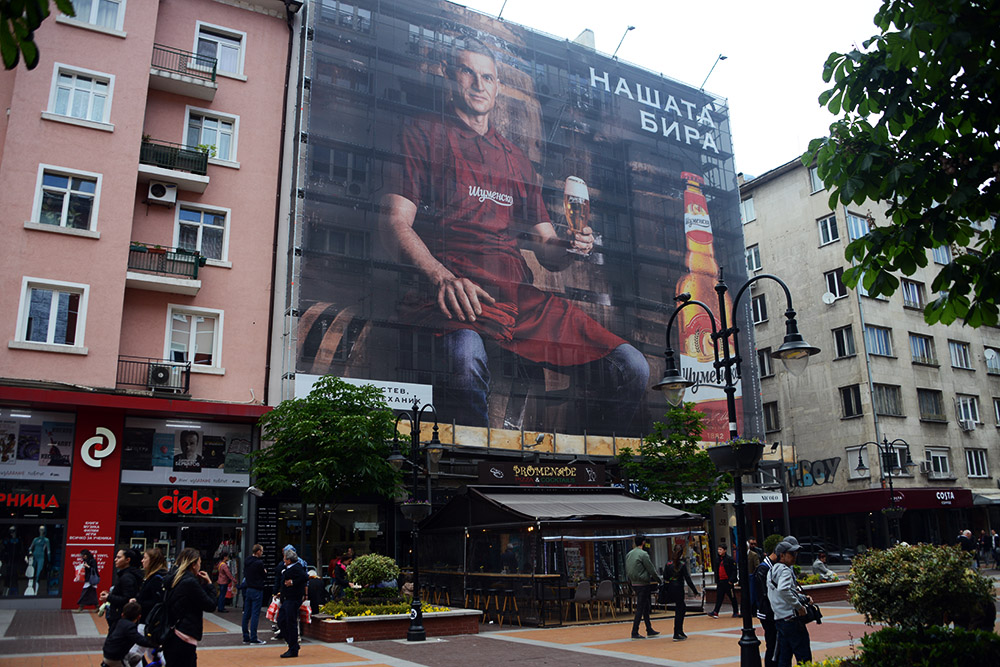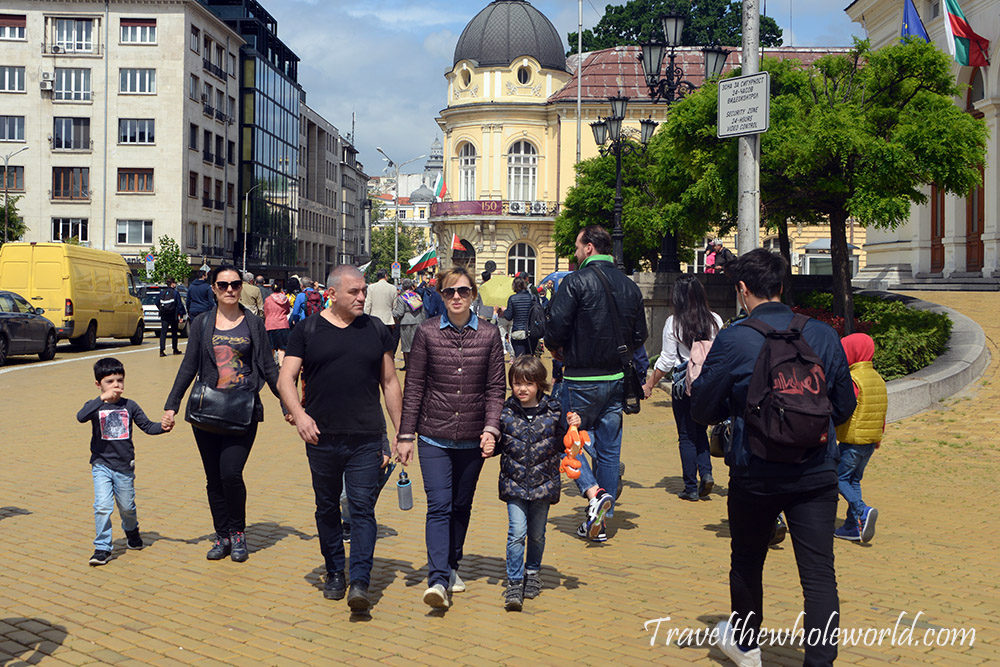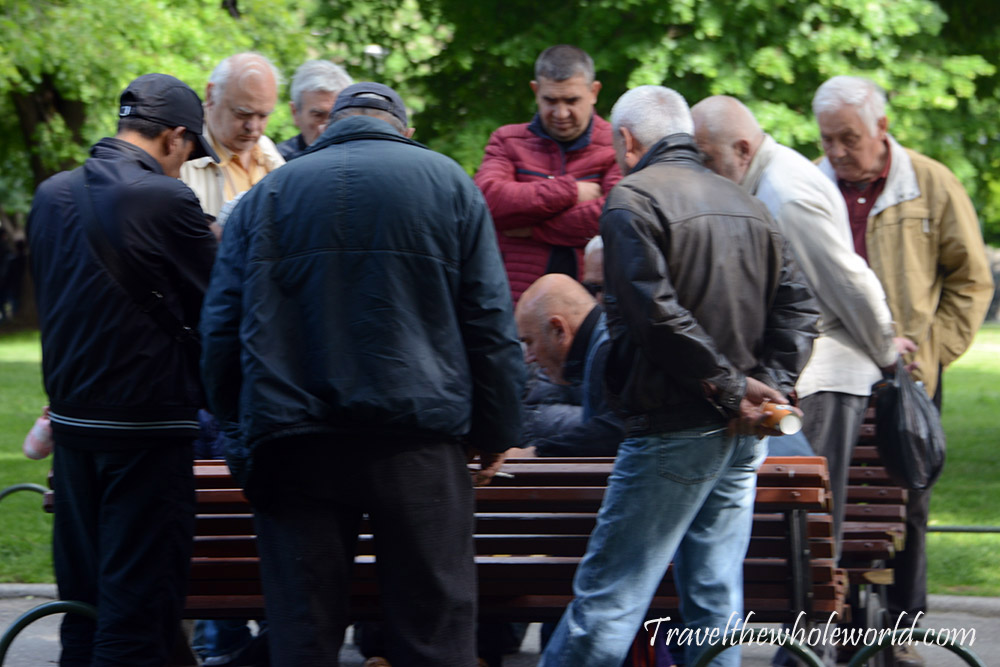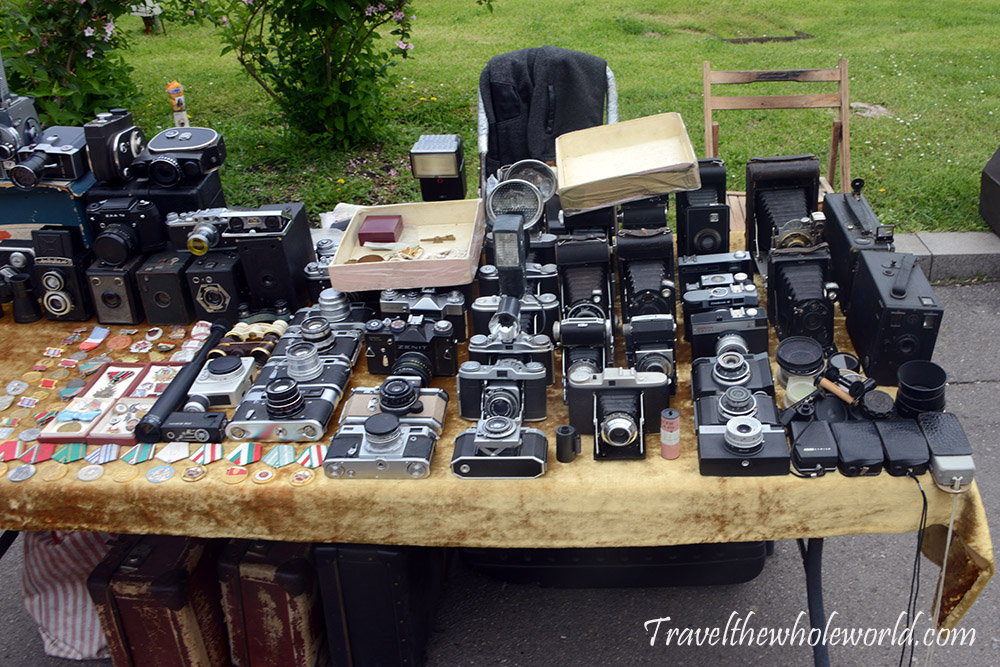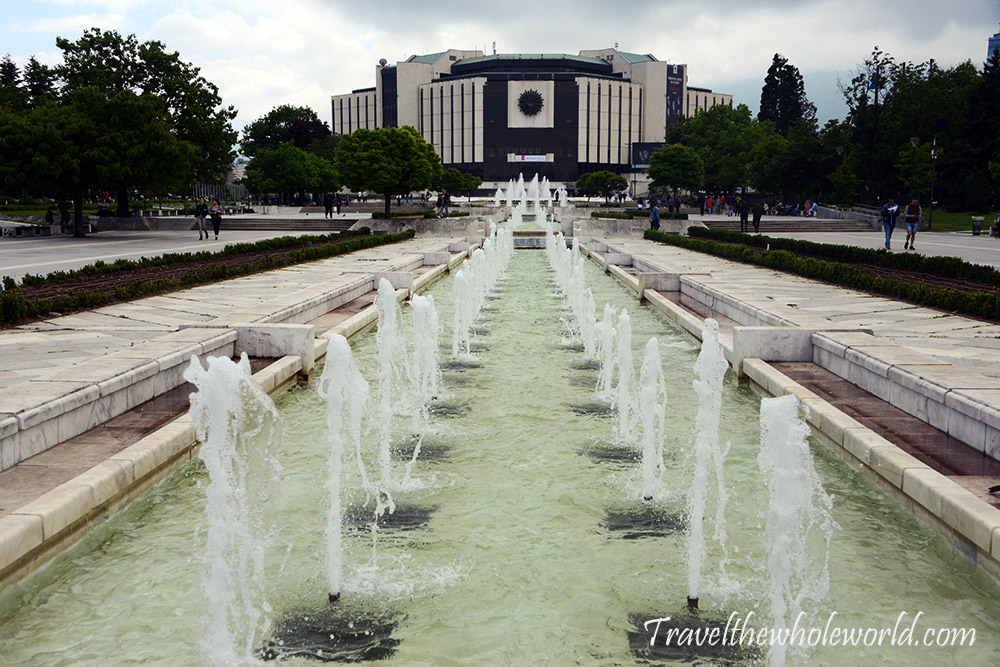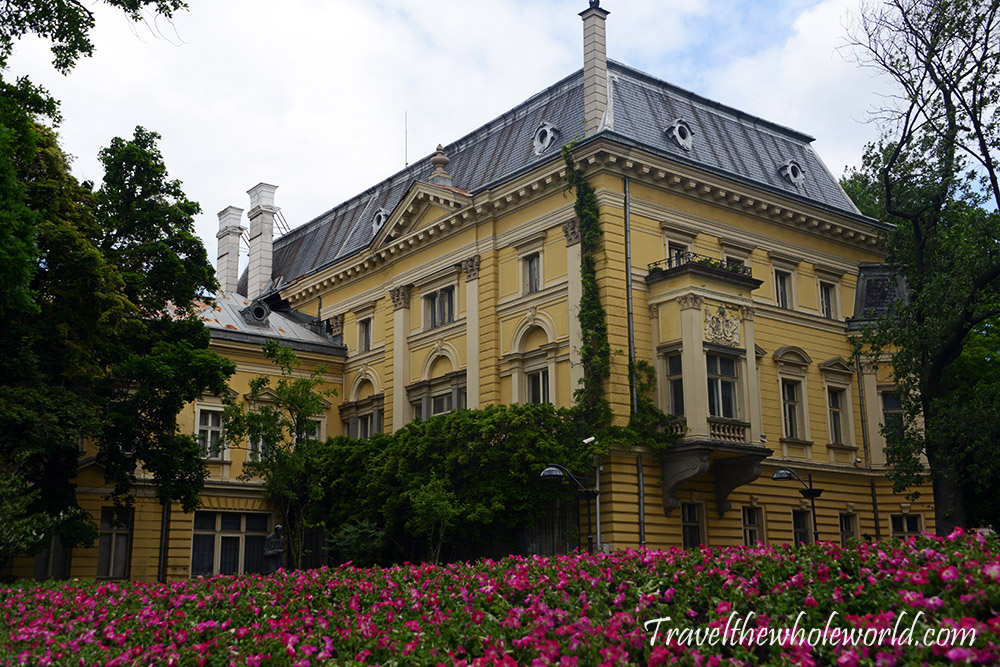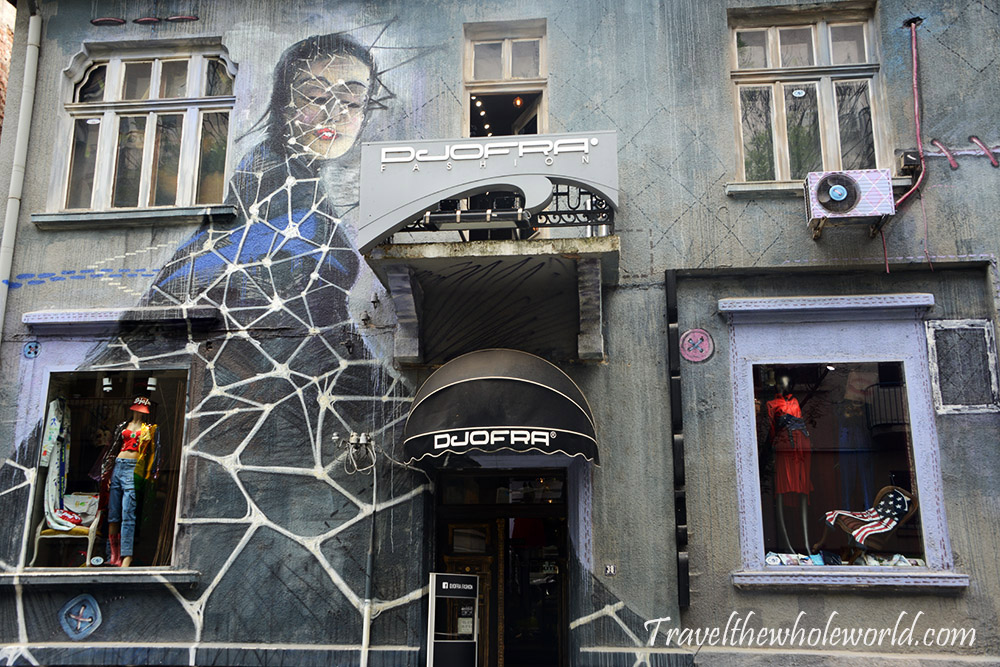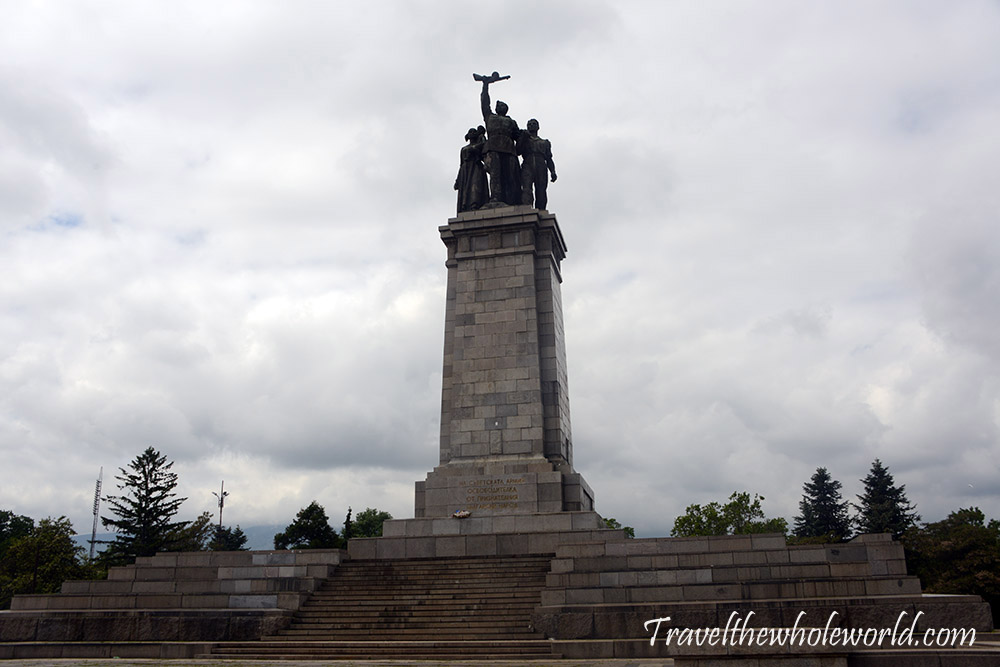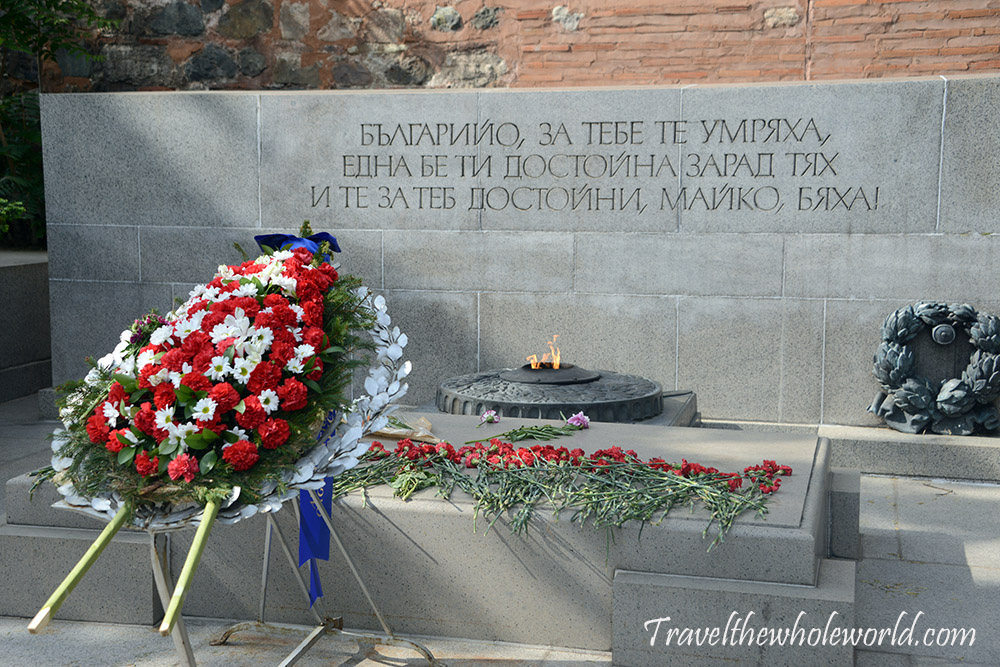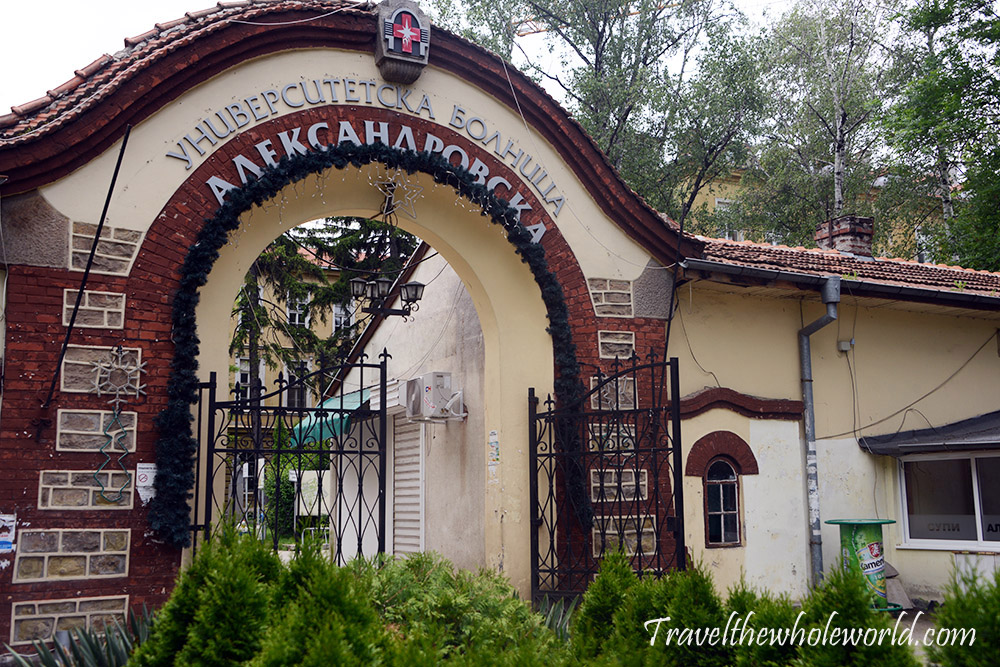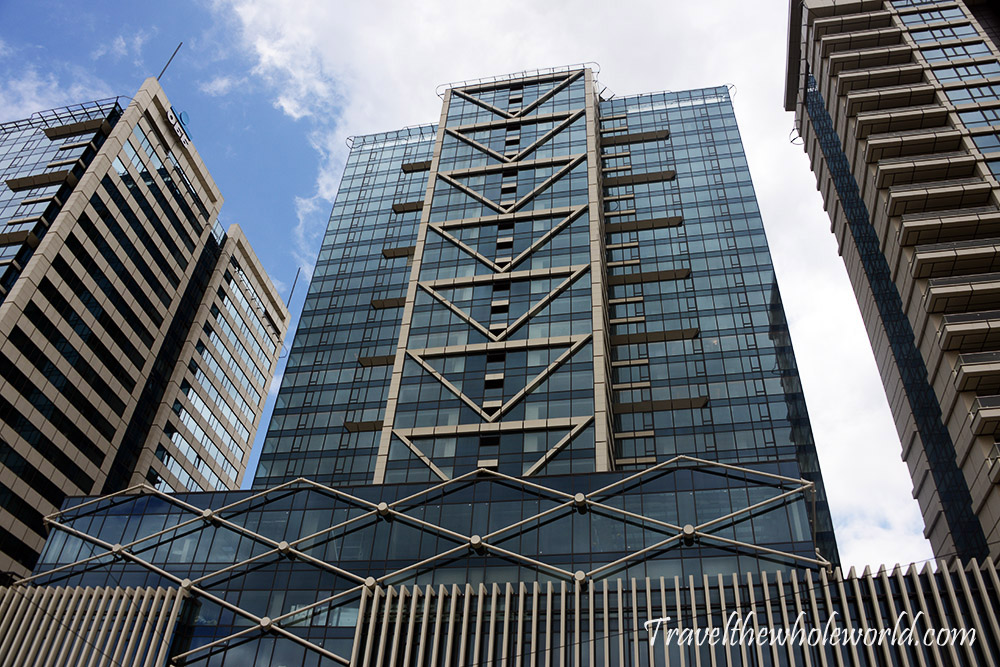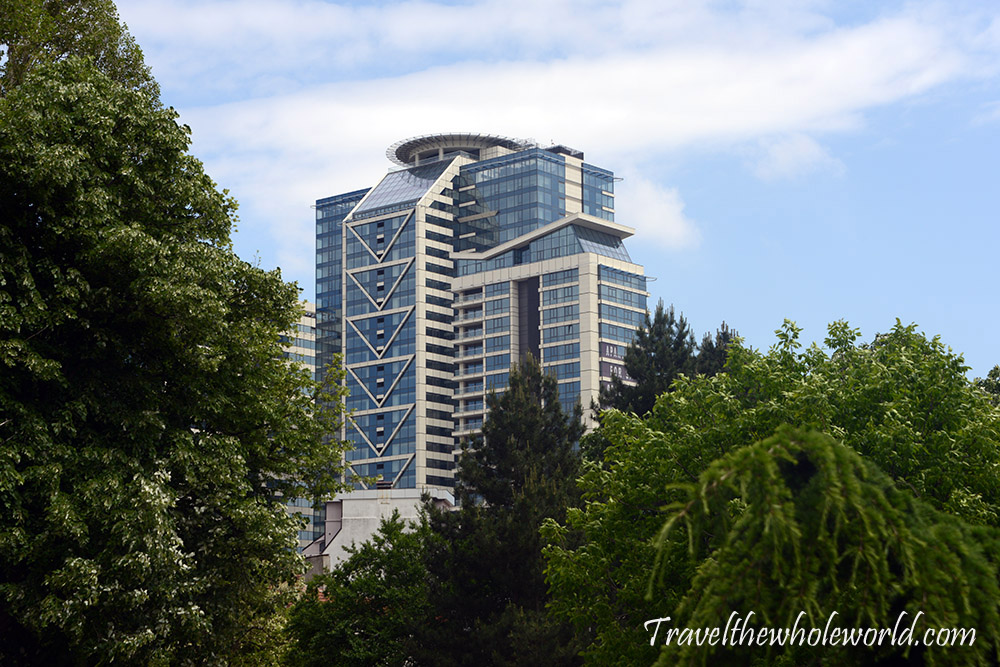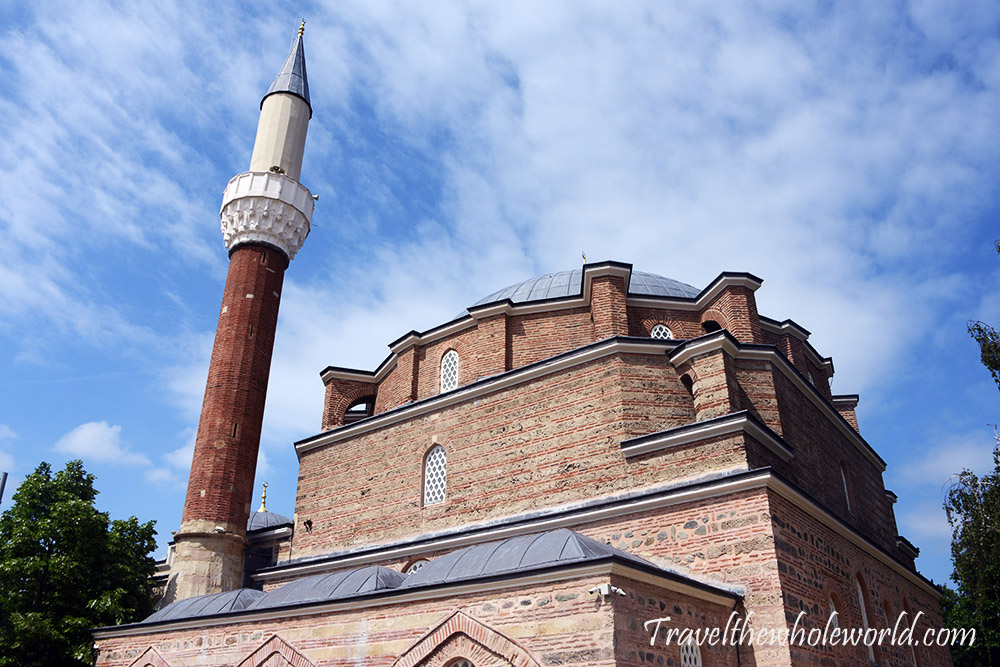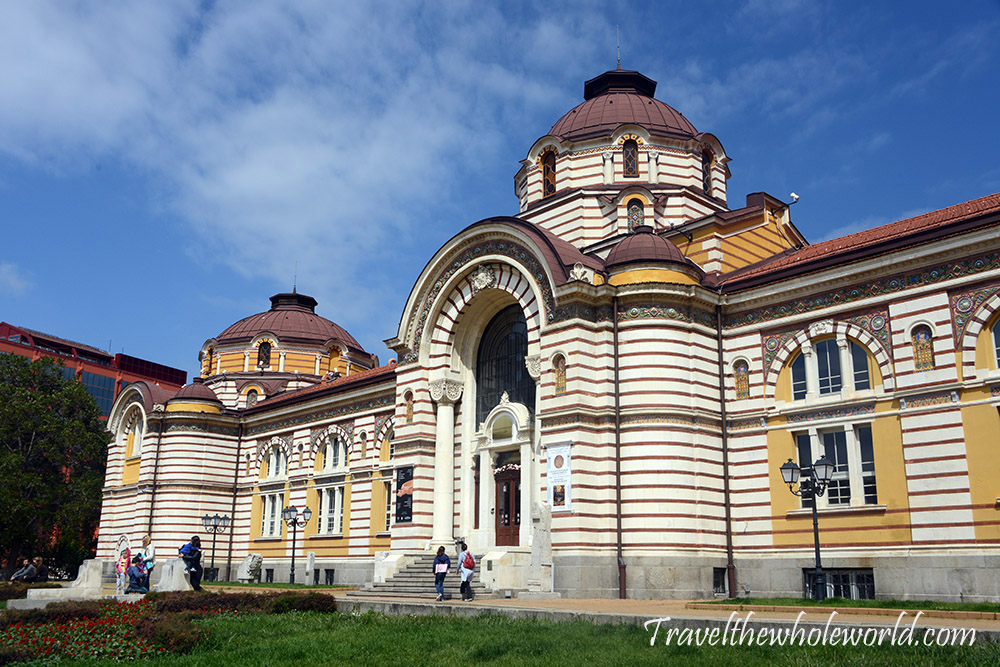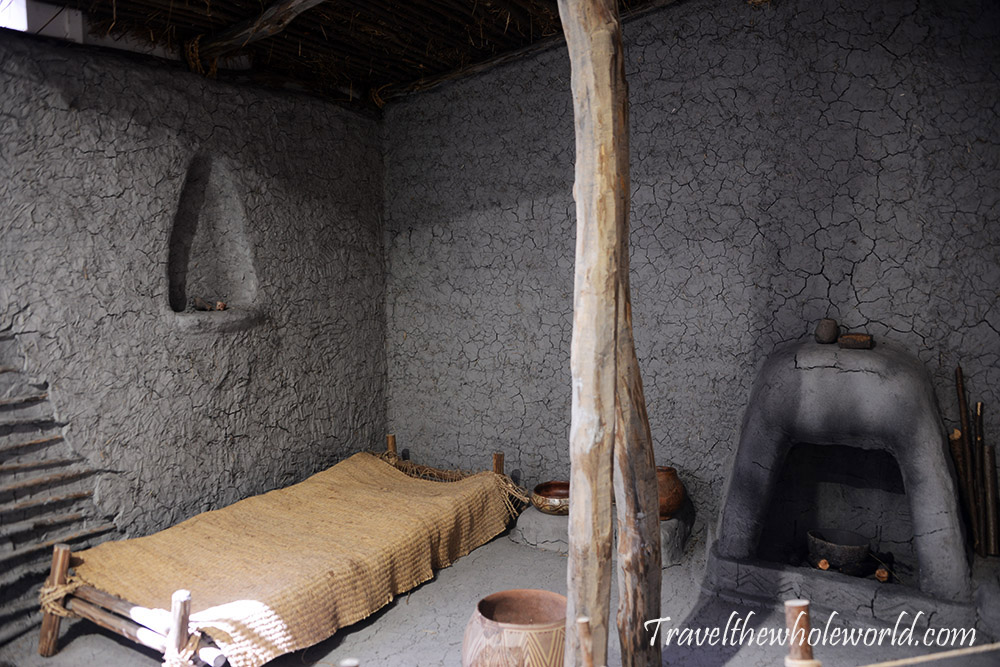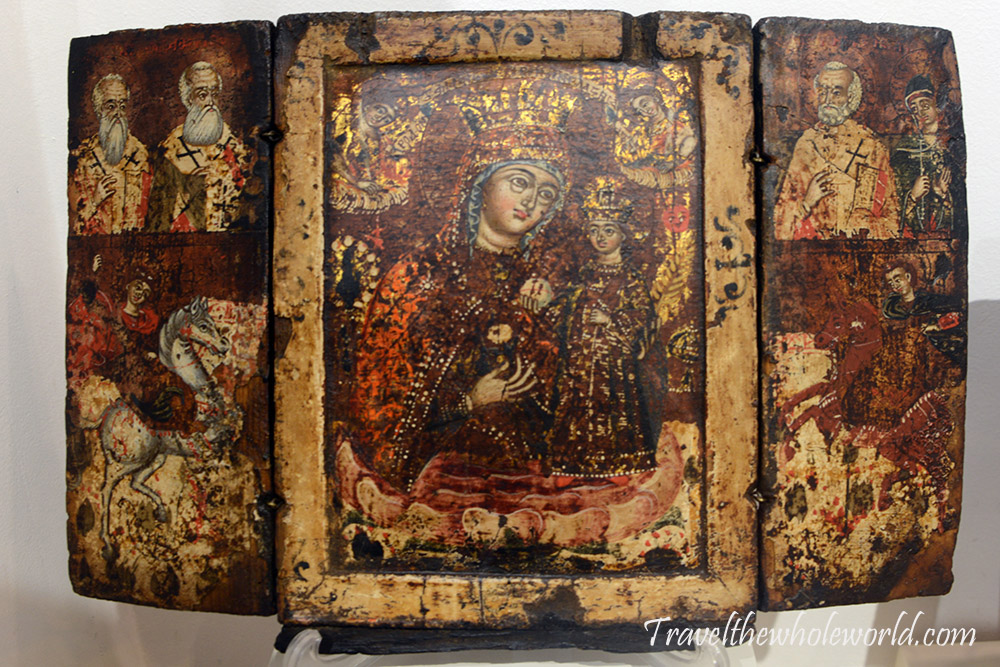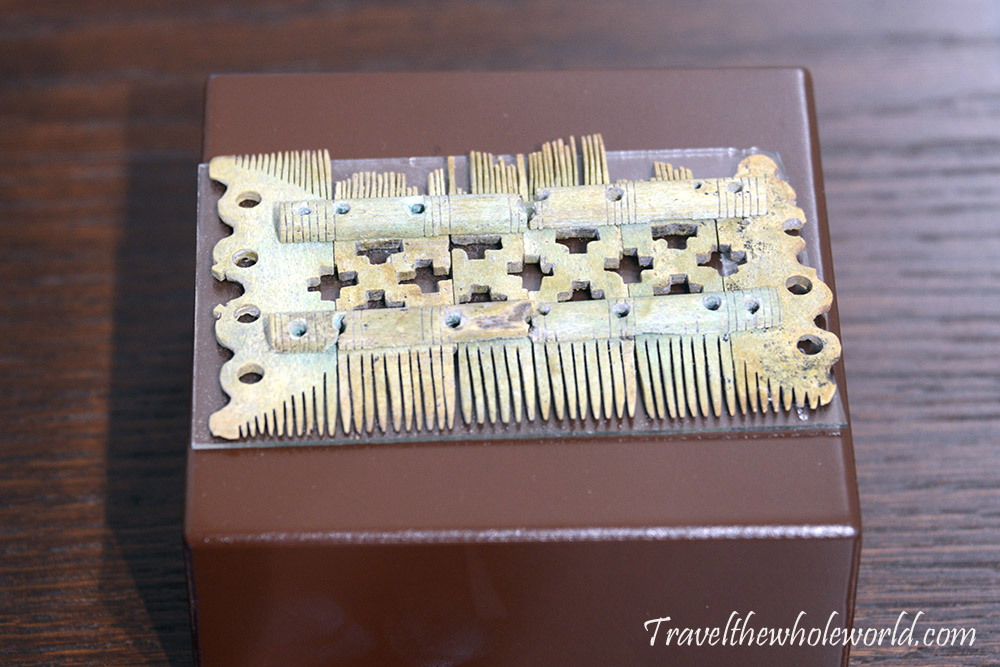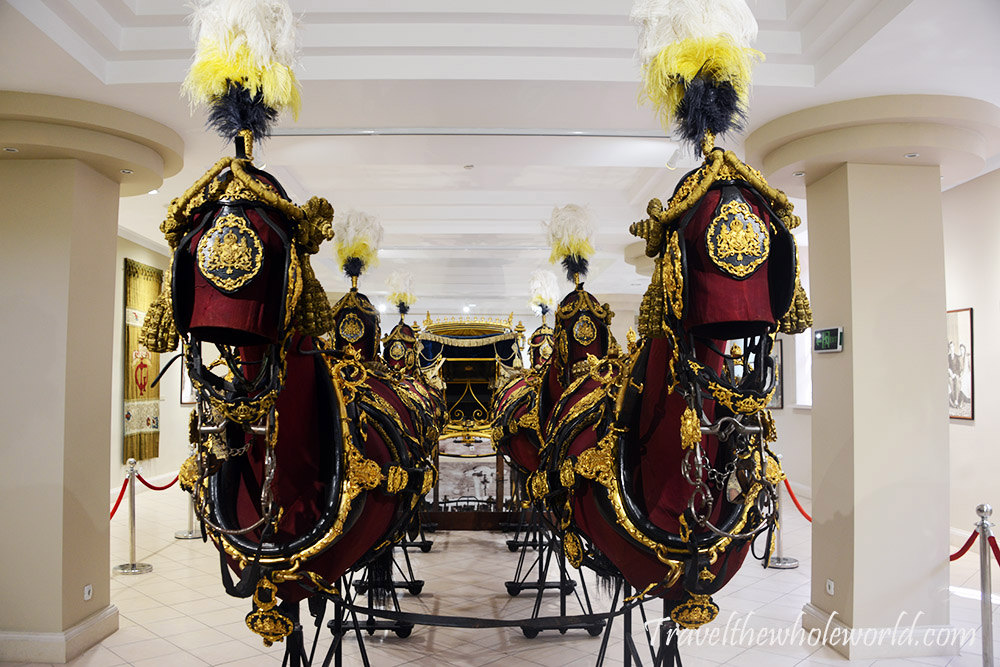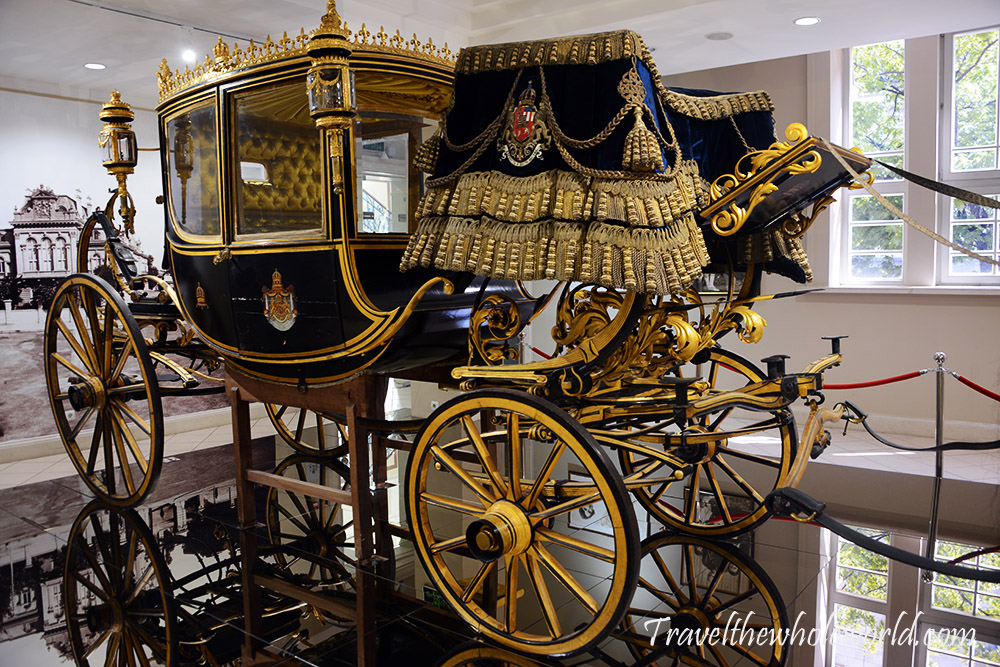Visting Sofia
I wasn’t sure where to start my page on Sofia, but a famous landmark and symbol of the country always works! If you walk around and explore Sofia yourself, you’ll quickly see that it’s a mix of past regional empires and cultures dating back thousands of years. Regarding religion, the majority of Bulgarians practice eastern Orthodox, although you’ll find Muslims, Catholics, and other secs here as well. Photographed above is the Alexander Nevsky cathedral, one of the largest cathedrals in the world with a capacity for over 5,000 people.
By chance I visited Bulgaria during a special time. It was May 24th, a national holiday where Bulgaria celebrates their culture and history. The city was full of parades, dances, and other events. During the main parade I took this photo above of some priests who I believe were from Alexander Nevsky cathedral.
I started off May 24th by following this marching band down one of the main avenues in the city center. I assume this group to be one of the most prominent bands in the country by their uniforms and performance. I worried about the distance I should place myself before I photographed them, but some local journalists seemed pretty aggressive so I did what they did and cross the parade a few times with a large group.
I could easily fill this page with photos from the May 24th festivals, but I’ll limit it to two more. There were several groups of performers that were in the parade too. I got a much better photo when I caught them before they were surrounded by a large mob going down the streets in the parade. These girls below didn’t seem to be part of the parade, but just were wearing traditional clothing for the holiday.
Instead of following the parade through the city I kind of weaved in and out as I went to different parts of the capital. Later on I came to a large courtyard that could have been the final destination for the parade. During the middle of the day when I approached it, there were so many people I wasn’t even able to see what was happening. I could hear live music from the front of the building, and only see news cameras stationed on lifts. The best I could do was take a photo of all the people around me at the time, but later on I returned and found the place to be empty. There was a single person left doing an interview on the news, and in the front of the building were these two statues which had fresh flowers laid.
I’d like to think I would have found this place anyway, but it was because of the parades and events that I stumbled upon St. George church. This ancient building was built in the 4th century, and is believed to be the oldest building in all of Sofia. They suspect that the church was built over the site of a former Pagan temple, and if that’s true that means that for over 2,000 years this has been an important place of worship. You can see the church has been surrounded by modern buildings, so unless you enter one of the archways it would be pretty easy to completely miss the place. There was no photography allowed inside the main church, but in the first entrance I was allowed to take this picture below where they had portraits lighted by candles.
Around the rotunda in front of St. George I saw at least a dozen people painting the church. At first I figured it might have been a school project because most of the painters looked like teens. As I explored the rest of Sofia though I saw more painters of all ages, so I believe it’s just something Bulgarians enjoy!
These Roman ruins were actually my first photographs in Sofia. It wasn’t until I got home that I realized these ruins were scattered about the front yard of the National Archaeology Museum of Bulgaria. There were several signs outside that provided detailed descriptions of their history, but of course I missed everything they hold inside. There was plenty outside to keep me interested, just a few blocks away you can descend some stairs to this ancient Roman street.
If you’re into ancient history Bulgaria is one of the best countries in Europe to visit. They are constantly discovering new ruins and secrets about the city’s past. The photograph above shows Church of St Petka of the Saddlers. Even though it was founded some 500 years ago, they made new discoveries when they excavated it after World War II. One meter walls that held a crypt were among the most interesting findings here. Some even believe that the Bulgarian national hero Vasil Levski was buried here as well.
The photo above shows the Ivan Vazov national theater, which in the white gazebo had live dancing. The shot below shows some fancy apartments that were directly next to the national theater.
One of the most famous neighborhoods is built around Vitosha Boulevard. This street is lined with some of the best restaurants and bars in the city. Some of the other parts of Sofia I suspect were packed with people because of the holiday, but I’m sure any weekend along Vitosha would be a lively place to visit.
Passing between random neighborhoods I took some people shots. The photo above is one of the more crowded streets closer to the city center. Sofia has several city parks, and one of them had a large group of men playing a board game. They crowded it enough that I couldn’t see what they were playing.
One part of the city I passed through had a small market set up. Most of the items for sale were random appliances or antiques. I’m not sure the demand for these vintage cameras, but the guy definitely had quite a collection. I assume he must be a photographer himself, so ironically he seemed annoyed that I took a picture of his stand.
One of the biggest city parks I visited was by luck. I saw this place from a block away and was impressed by how size of the place and how it was decorated by so many fountains. Turns out this is Yuzhen Park, which means South Park in Bulgarian. The park has a little bit for everyone here. Aside from the cafes and picnics that families enjoy, there are ramps for skateboarding and even a few places for mountain bikes apparently. I figured for sure I’d come back here in the evening and take some night shots but didn’t make it back.
Sofia is diverse enough that it has all types of neighborhoods. The majority seemed to be made of historic buildings that are popular in eastern Europe. This one above was one of my favorites because of its small field of flowers. In a smaller street I came across several older buildings which didn’t have the luxury of lawns to create gardens. They made up for this by painting murals over some of their buildings.
Two war memorials I came across in Sofia were the Vasil Levski memorial above, and this eternal flame. Other than knowing that Vasil Levski is a national hero, I was unaware when he lived or what wars he fought in when I had visited his memorial. Later I found out he founded the revolution that later freed the country from the Ottoman empire, and basically created modern day Bulgaria.
One of the smartest people I know back home in Washington DC is a neuroscientist from Bulgaria. Knowing that he started his career here, I felt obligated to make a brief stop by Sofia’s medical university. Being the weekend it was mostly closed, but I was able to surprise him with a selfie from the gates of the campus photographed above.
Even though I traveled here alone, I was glad to have a local’s knowledge of the country when I got back home. My friend told me that Bulgaria taxes are competitively low which is bringing in lots of business and expansion to the city. For that reason lots of infrastructure is popping up, such as these two massive buildings that looked to be only a few years old.
A piece of history left behind by the Ottoman empire is the Banya Bashi mosque. This mosque was built in 1566, and its name literally means many baths! Surprisingly this is the only mosque in Sofia although the country’s Muslim population is almost 10%.
True to its name, directly behind the Banya Bashi mosque is a former Turkish bath house. The bath house was built much later than the mosque, but functioned until the 1980’s. This is now Sofia’s history museum, and was the only museum I visited in the capital. It was a museum definitely worth visiting, and covered history starting from prehistoric times, as seen in this primitive hut photo below.
I most enjoyed the artwork from centuries past. This fresco above was created during the 16th century, roughly around the same time the Banya Bashi mosque was built. Below is actually an ancient comb created hundreds of years ago. The intricate bone comb as it was called, was likely owned by royalty at the time.
The history museum has two floors, with all kinds of artwork, artifacts, and stories from Bulgaria’s past. Since I feel limited with what I can share here I’ll post two pictures of my favorite exhibit. These golden chariots came from King Louis XVI of Versailles. They were built for the marriage of Bulgaria Tsar and King Ferdinand I and his wife Marie-Louisa. The couple married out of love in 1893, but his wife passed away during child birth only six years later. After losing his wife King Ferdinand had no interest to remarry, but finally did for for ceremonial and political reasons.
